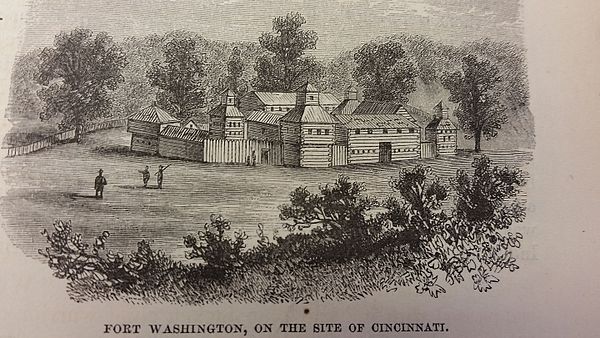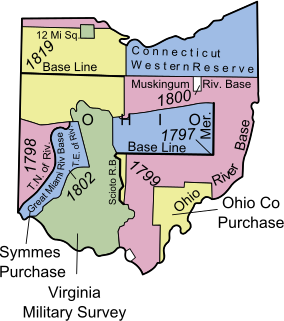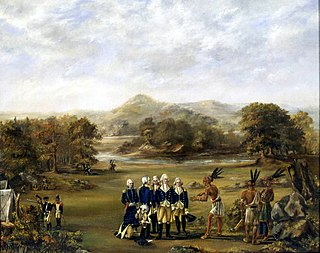
The Northwest Indian War (1785–1795), also known as the Ohio War, Little Turtle's War, and by other names, was a war between the United States and a confederation of numerous Native American tribes, with support from the British, for control of the Northwest Territory. It followed centuries of conflict over this territory, first among Native American tribes, and then with the added shifting alliances among the tribes and the European powers of France and Great Britain, and their colonials.
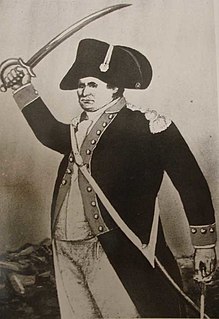
William Darke was an American soldier. In 1740, he moved from Philadelphia, Pennsylvania to Virginia. He was in Braddock's army in the defeat in 1755, and was made a captain at the beginning of the American Revolutionary War. He was made prisoner at the Battle of Germantown, and was commanding colonel of the Hampshire and Berkeley regiments at the capture of Cornwallis. Darke was often a member of the Virginia legislature, and, in the convention of 1788, voted for the Federal Constitution. Lieutenant-colonel of the regiment of "Levies" in 1791, he commanded the left wing of the St. Clair's army, at its defeat by the Miami Indians, November 4, 1791. He made two unsuccessful charges with the bayonet in this fight, in the second of which his younger son, Captain Joseph Darke, was killed, and he himself was wounded and narrowly escaped death. He wrote a letter to President George Washington describing the battle. Afterwards, Darke was a major-general of the Virginia militia. He died on November 26, 1801.

Fort Recovery was a United States Army fort ordered built by General "Mad" Anthony Wayne during what is now termed the Northwest Indian War. Constructed from late 1793 and completed in March 1794, the fort was built along the Wabash River, within two miles of what became the Ohio state border with Indiana. A detachment of Wayne's Legion of the United States held off an attack from combined Indian forces on June 30, 1794. The fort was used as a reference in drawing treaty lines for the 1795 Treaty of Greenville, and for later settlement. The fort was abandoned in 1796.

The Legion of the United States was a reorganization and extension of the Continental Army from 1792 to 1796 under the command of Major General Anthony Wayne composed of professionally trained soldiers, rather than state militias. The Legion was composed of four sub-legions each with its own infantry, cavalry, riflemen and artillery.

Charles Scott was an 18th-century American soldier who was elected the fourth Governor of Kentucky in 1808. Orphaned in his teens, Scott enlisted in the Virginia Regiment in October 1755 and served as a scout and escort during the French and Indian War. He quickly rose through the ranks to become a captain. After the war, he married and engaged in agricultural pursuits on land left to him by his father, but he returned to active military service in 1775 as the American Revolution began to grow in intensity. In August 1776, he was promoted to colonel and given command of the 5th Virginia Regiment. The 5th Virginia joined George Washington in New Jersey later that year, serving with him for the duration of the Philadelphia campaign. Scott commanded Washington's light infantry, and by late 1778 was also serving as his chief of intelligence. Furloughed at the end of the Philadelphia campaign, Scott returned to active service in March 1779 and was ordered to South Carolina to assist General Benjamin Lincoln in the southern theater. He arrived in Charleston, South Carolina, just as Henry Clinton had begun his siege of the city. Scott was taken as a prisoner of war when Charleston surrendered. Paroled in March 1781 and exchanged for Lord Rawdon in July 1782, Scott managed to complete a few recruiting assignments before the war ended.
The Treaty of Fort Harmar was an agreement between the United States government and numerous Native American tribes with claims to the Northwest Territory. It was signed at Fort Harmar, near present-day Marietta, Ohio, on January 9, 1789. Representatives of the Iroquois Six Nations and other groups, including the Wyandot, Delaware, Ottawa, Chippewa, Potawatomi and Sauk met with Arthur St. Clair, the governor of the Northwest Territory, and other American leaders such as Josiah Harmar and Richard Butler.

Cincinnati was founded in late December 1788 by Mathias Denman, Colonel Robert Patterson and Israel Ludlow. The original surveyor, John Filson, named it "Losantiville", from four terms, each of different language, before his death in October 1788. It means "The city opposite the mouth of the river"; "ville" is French for "city", "anti" is Greek for "opposite", "os" is Latin for "mouth", and "L" was all that was included of "Licking River".
James Fontaine was an officer who served in American Revolutionary War and the Northwest Indian War. The name is spelled several ways, including "Fountaine".
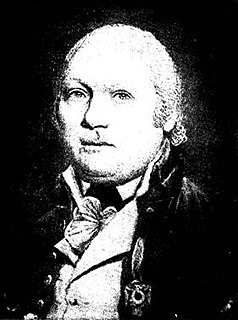
David Ziegler was a German immigrant to the United States who served in the U.S. military and became the first mayor of Cincinnati, Ohio.

The Harmar Campaign was an attempt by the United States, in the fall of 1790, to subdue Native Americans in the Northwest Territory who were seeking to expel American settlers they saw as interlopers in their territory.

Fort Harmar was an early United States frontier military fort, built in pentagonal shape during 1785 at the confluence of the Ohio and Muskingum rivers, on the west side of the mouth of the Muskingum River. It was built under the orders of Colonel Josiah Harmar, then commander of the United States Army, and took his name. The fort was intended for the protection of Indians, i.e., to prevent pioneer squatters from settling in the land to the northwest of the Ohio River. "The position was judiciously chosen, as it commanded not only the mouth of the Muskingum, but swept the waters of the Ohio, from a curve in the river for a considerable distance both above and below the fort." It was the first frontier fort built in Ohio Country.

St. Clair's Defeat also known as the Battle of the Wabash, the Battle of Wabash River or the Battle of a Thousand Slain, was a battle fought on November 4, 1791 in the Northwest Territory of the United States of America. The U.S. Army faced the Western Confederacy of Native Americans, as part of the Northwest Indian War. It was "the most decisive defeat in the history of the American military." It was the largest victory ever won by Native Americans.
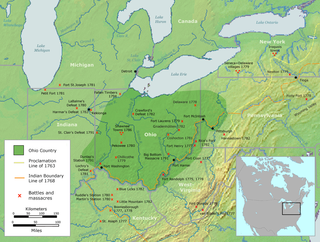
The Siege of Dunlap's Station was a battle that took place on January 10–11, 1791, during the Northwest Indian War between the Western Confederacy of American Indians and European-American settlers in what became the southwestern region of the U.S. state of Ohio. This was one of the Indians' few unsuccessful attacks during this period. It was shortly after the Harmar Campaign attacks and unprecedented defeat of U.S. Army forces. A few months after the siege, the Army's St. Clair's campaign famously failed.

Fort Steuben was a fortification erected in Feb. 1787 on the Ohio River in eastern Ohio Country at the northern end of the Seven Ranges land tract to be surveyed. It was at the location of the modern city of Steubenville, Ohio. The fort was built by Major John Hamtramck and named for Friedrich Wilhelm von Steuben, a Prussian army officer who had served under General Washington. The original purpose was to provide protection from Indians for the first surveyors to venture into the Northwest Territory.
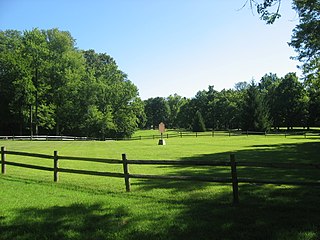
Fort St. Clair was a fort built during the Northwest Indian War near the modern town of Eaton, Preble County, Ohio. The site of the fort was listed on the National Register of Historic Places in 1970.

